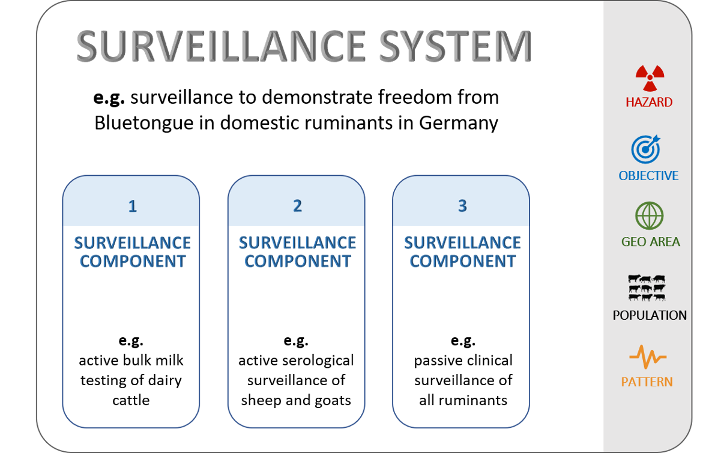-
Notifications
You must be signed in to change notification settings - Fork 1
Home

The objective of the present project is to produce a set of reporting guidelines to facilitate consistent and credible reporting of surveillance activities and their outcomes.
The rationale behind it is that by moving towards more output−based standards for surveillance, and allowing greater flexibility in surveillance design, there will be an increased need for transparency about design features as well as how the activities are actually implemented.
The idea of reporting guidelines comes from the field of evidence−based medicine and serves to improve consistency and quality of information reported in scientific journals. A few reporting guidelines directly relevant to the veterinary field are available, such as REFLECT and STROBE-Vet. These statements target randomized controlled trials and observational studies reported in veterinary scientific literature and are based on guidelines already developed for studies in humans (CONSORT and STROBE). Several more are available for studies in the medical field (for an overview, see https://www.equator−network.org/). However, none of these are directly applicable to surveillance activities. Note that the term ‘reporting’ in this context does not refer to the procedure of notification of disease suspicions or −findings to authorities – it is about communication of surveillance outcomes to a broader audience, including e.g. relevant industries, trade partners and other stakeholders.
👉 The choice of a Wiki format was motivated by the fact that refinements and improvements of the guidelines are both expected and welcome, so feel free to contribute by sending your comments to ahsured@sva.se.
SURVEILLANCE: The systematic, continuous or repeated, measurement, collection, collation, analysis, interpretation and timely dissemination of animal health and welfare related data from defined populations. These data are then used to describe health hazard occurrence and to contribute to the planning, implementation, and evaluation of risk mitigation actions.
Surveillance information is gathered through surveillance systems.
- SURVEILLANCE SYSTEM: A set of surveillance components (and the associated organisational structures) used to investigate the occurrence of a single hazard in a specified population.
- SURVEILLANCE COMPONENT: A single surveillance activity (defined by the source of data and the methods used for its collection) used to investigate the occurrence of one or more hazards in a specified population.

Surveillance data can be gathered in different ways:
- ACTIVE SURVEILLANCE: Investigator-initiated collection of animal health related data using a defined protocol to perform actions that are scheduled in advance. Decisions about whether information is collected, and what information should be collected from which animals is made by the investigator. Also: Proactive surveillance.
- PASSIVE SURVEILLANCE: Observer-initiated provision of animal health related data (e.g. voluntary notification of suspect disease) or the use of existing data for surveillance. Decisions about whether information is provided, and what information is provided from which animals is made by the data provider.
- ENHANCED PASSIVE SURVEILLANCE: Observer-initiated provision of animal health related data with active investigator involvement e.g. by actively encouraging producers to report certain types of disease or by active follow up of suspect disease reports.
Additional relevant terminology can be found in the RISKSUR project at https://www.fp7-risksur.eu/terminology/
Understanding the process that led to a surveillance outcome is fundamental to correctly interpret the results. In fact, a surveillance outcome (e.g. 2 positive samples out of 100 tested) provides reliable information on health hazard occurrence only when put into a context. This can be done by describing the design/architecture of the surveillance activities (components) within the specific epidemiological situation (context) where they operate.
This is a fictional example of how the architecture of surveillance can be described:

➡️ Go to Instructions
➡️ Read more about development process